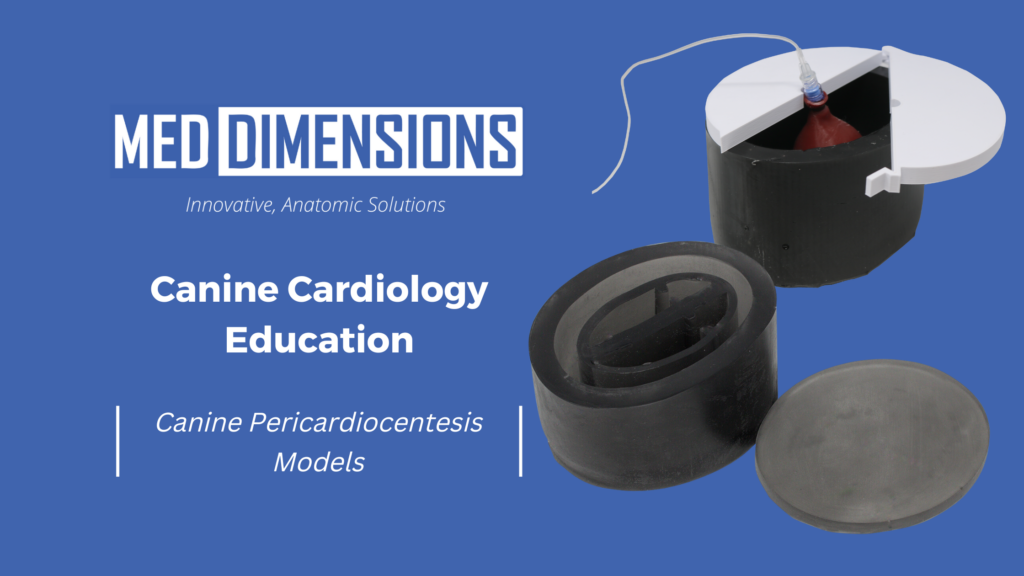Canine Cardiology Education: Canine Pericardiocentesis Models

Med Dimension’s Canine Pericardiocentesis Economy and Standard models have revolutionized the teaching and practice of the critical veterinary procedure, pericardiocentesis.
Med Dimensions’ Canine Pericardiocentesis Models: Economy and Standard
- When is Canine Pericardiocentesis Performed?
Canine pericardiocentesis is typically performed in cases of pericardial effusion, which can result from various underlying conditions such as heart disease, trauma, or neoplasia. The accumulation of fluid around the heart can lead to cardiac tamponade—a life-threatening condition. Performing pericardiocentesis is crucial in relieving pressure on the heart and improving the dog’s overall cardiac function. - Embedded Ribs and Inflatable Heart:
Med Dimensions’ commitment to realism is evident in the design of the standard model. The inclusion of embedded ribs allows the student and practitioner to tactically feel the model and the expected spacing between the ribs. The inflatable heart replicates demonstrate the decreasing distance between the heart and chest wall, providing students with a lifelike simulation for hands-on practice. This level of detail enhances the learning experience, allowing students to develop the tactile skills necessary for performing pericardiocentesis with precision. - Ultrasound-Guided Training:
The key innovation lies in the training approach—students practice canine pericardiocentesis on either the economy or standard model by filling the hollow cavity of the model with water. Using an ultrasound machine, practitioners can visualize the internal structures, and precisely insert a needle to withdraw fluid. The opaque black dye ensures that the practitioner cannot rely on visual cues but must rely solely on ultrasound guidance, mirroring real-world scenarios. - Enhancing Diagnostic and Interventional Skills:
Canine pericardiocentesis is a crucial diagnostic and therapeutic procedure. These models provide a safe and controlled environment for students to develop the skills necessary to diagnose and treat pericardial effusion—a condition where fluid accumulates around the heart. By incorporating ultrasound guidance, practitioners can refine their abilities to navigate the needle with precision, preparing them for the challenges of clinical practice. - The Importance of Realistic Training:
Med Dimensions’ models address the need for realistic training in veterinary education. The incorporation of embedded ribs, and an inflatable heart for the standard model, while remaining cost-conscious with an economy model, this ultrasound-guided training ensures that students are well-prepared for the complexities of performing canine pericardiocentesis in a clinical setting. The emphasis on relying solely on ultrasound for needle guidance reflects the evolving standards in veterinary practice.
Med Dimensions’ Canine Pericardiocentesis Economy and Standard models represent a significant leap forward in veterinary education. By providing students with realistic, hands-on training opportunities, these models empower the next generation of veterinarians with the skills necessary to diagnose and treat pericardial effusion in canine patients. As the field of veterinary cardiology continues to advance, these innovative educational tools play a crucial role in ensuring that practitioners are well-equipped to provide the highest standard of care to their animal patients.
